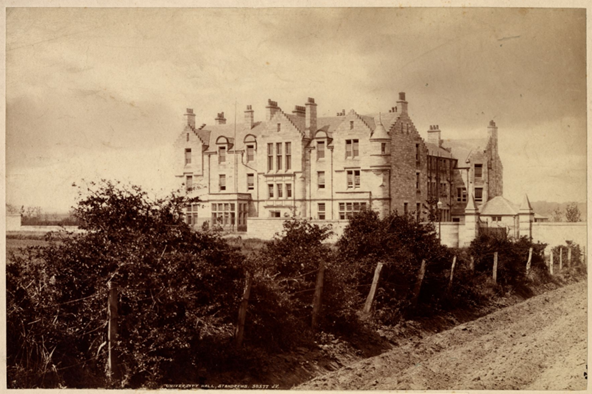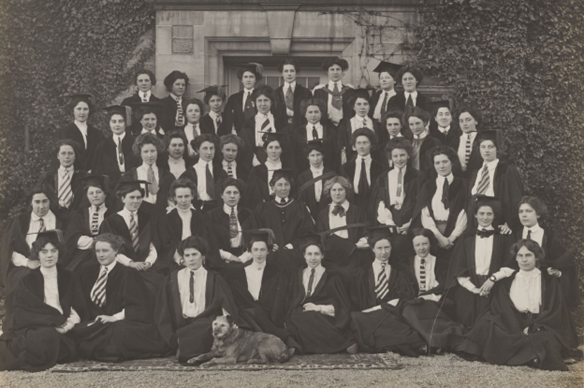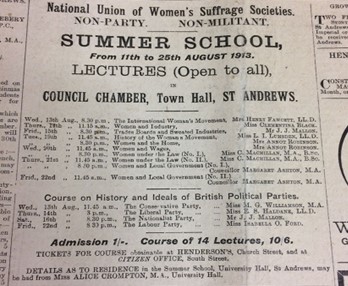University Hall as a Centre of Early and First-Wave Feminism

St Andrews’ University Hall was founded in 1896 to accommodate female students following the formal allowance of women in Scottish undergraduate degree programmes in 1892. Women had been studying in a limited capacity at the University since the foundation of the ‘Lady Literate in Arts’ (LLA) correspondence diploma programme in 1877 but had not needed to reside within the town. The proceeds of this programme went towards establishing University Hall, the first Women’s Hall in Scotland, though it functioned a little differently than it does today. Female students, according to societal standards at the time, needed a structured residence and a caretaker to serve ‘in loco parentis,’ and the University picked none other than Louisa Lumsden to serve this role as the first Warden of the Hall, invited by Professor William Angus Knight in 1894.
Lumsden was an extremely well-qualified pick, familiar with the town and an outspoken proponent of women’s education. She herself was part of Cambridge’s Girton Five, the first cohort of matriculated women, and was the first headmistress at St Leonards School for Girls in St Andrews. Under Lumsden’s watchful eye, University Hall was established as a strict but caring intentional community of female intellectuals. Lumsden, however, left the role after only five years due to disagreements with University management as a whole and was replaced by Frances Melville.

The year 1913 marked a noticeable rift between the factions of suffragists of St Andrews, mirroring the international tensions around the movement’s visibility. On the 23rd of June, the east wing of the Gatty Marine Laboratory was set alight in protest, much to the ire of then-director, William McIntosh, who criticised the turn in the movement in his correspondence. Placards and tins of accelerant were left at the scene, claiming the incident in the name of suffragettes. Discomfort with the movement in St Andrews was compounded with the July 1st fire-bombing of Leuchars Train Station. While suffragettes are not documented to have publicly confessed to the second incident, its methods mirrored the first, with newspapers at the time linking the two. The University, however, did officially tolerate the suffrage movement as a whole, hosting an NUWSS- sponsored “Suffragist Summer School” at University Hall in August of the same year.

The course was a series of lectures from national campaign leaders, including Louisa Lumsden, accompanied by salons hosted in the Hall itself and marketed to be non-violent. The lectures were held in the Town Hall to circumvent the University’s ban on political speech within its campus. In 1914, University Hall’s students’ practical expertise was pivoted as it opened Fife 1, a Voluntary Aided Detachment (VAD) unit to nurse soldiers with their medical knowledge under student-run Red Cross Detachment Fife 68. The original unit was founded by Mildred Dobson, then-warden of the hall. While the national campaign for women’s equality was largely postponed due to the First World War, University Hall set precedent in its involvement and empowerment of women.
